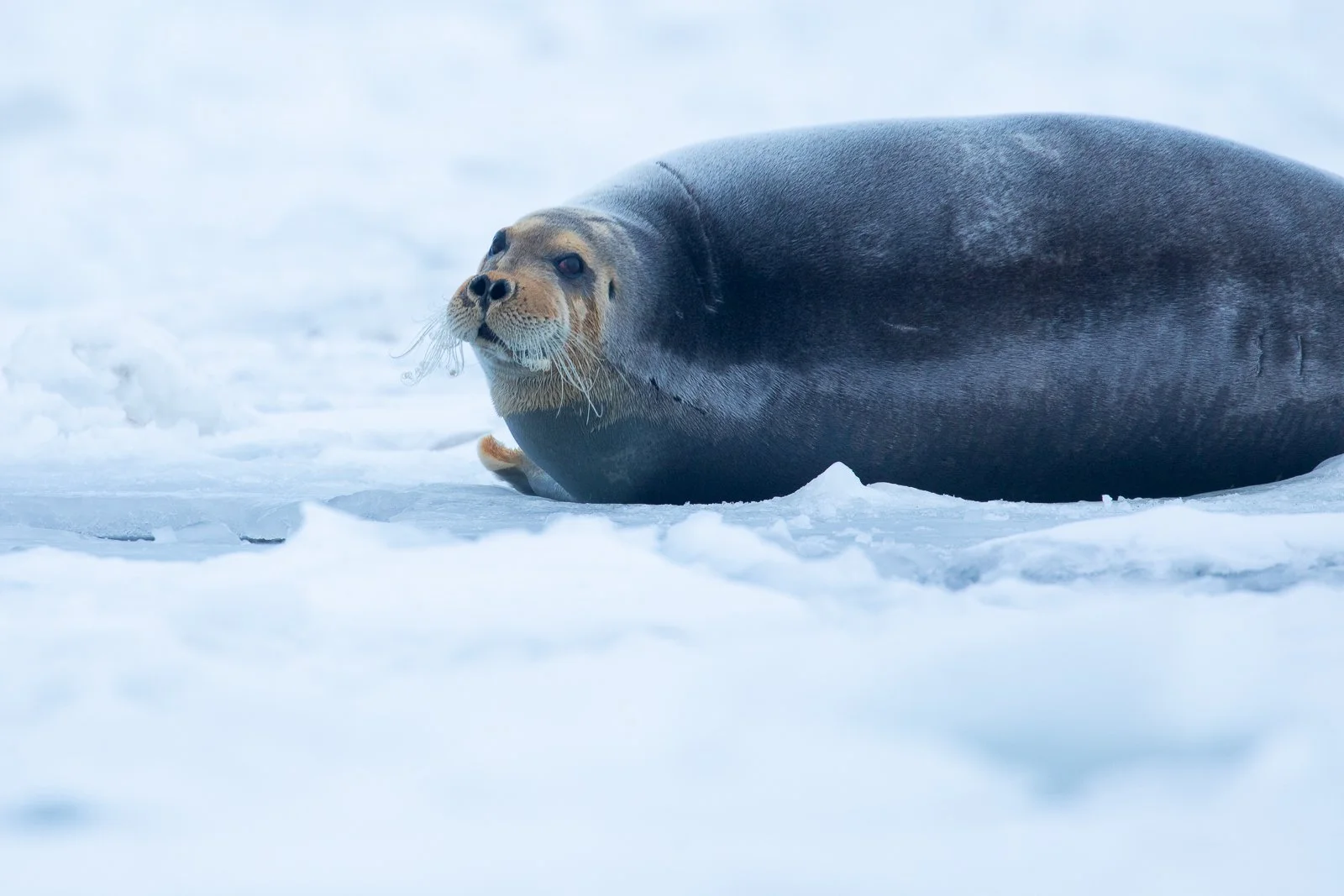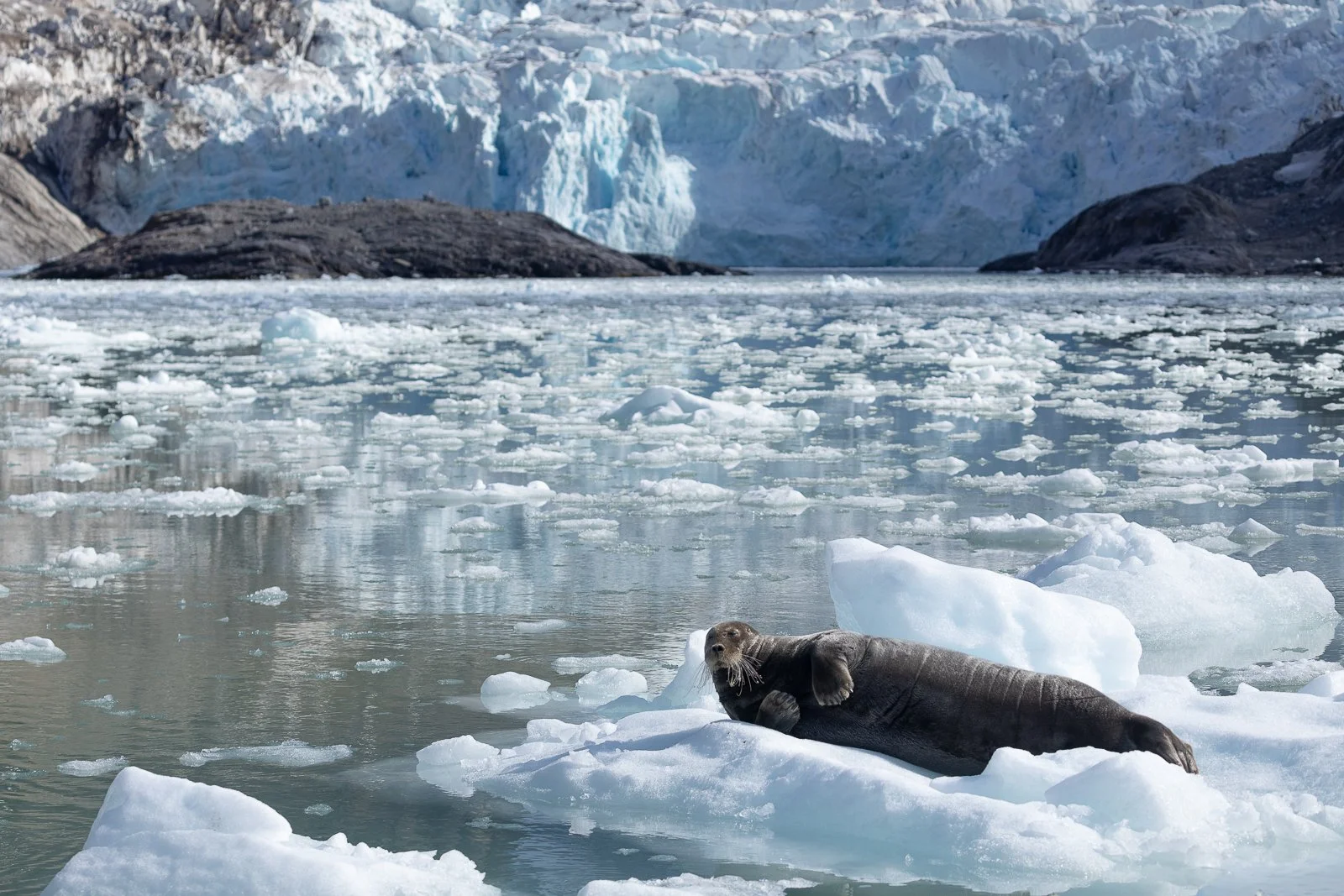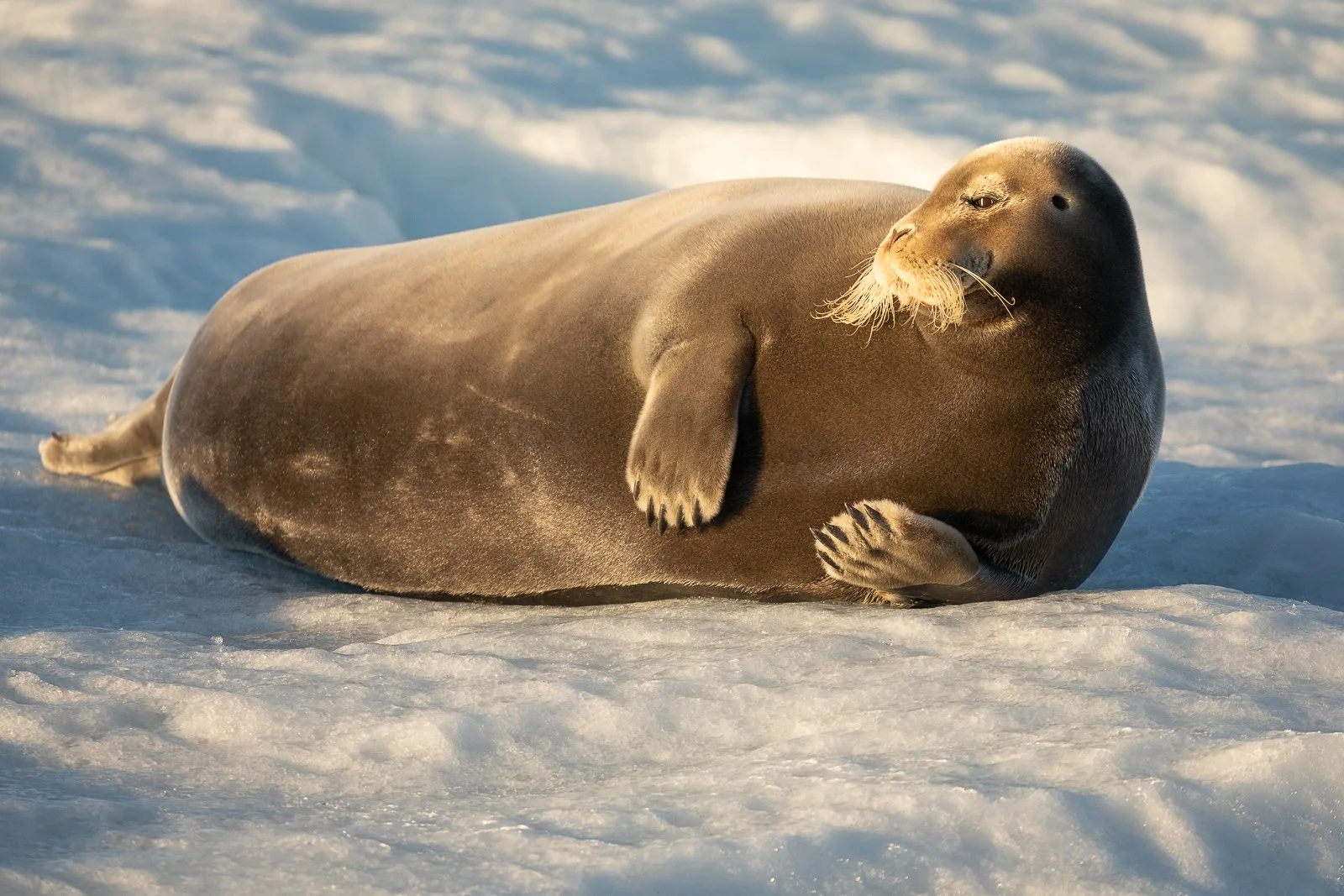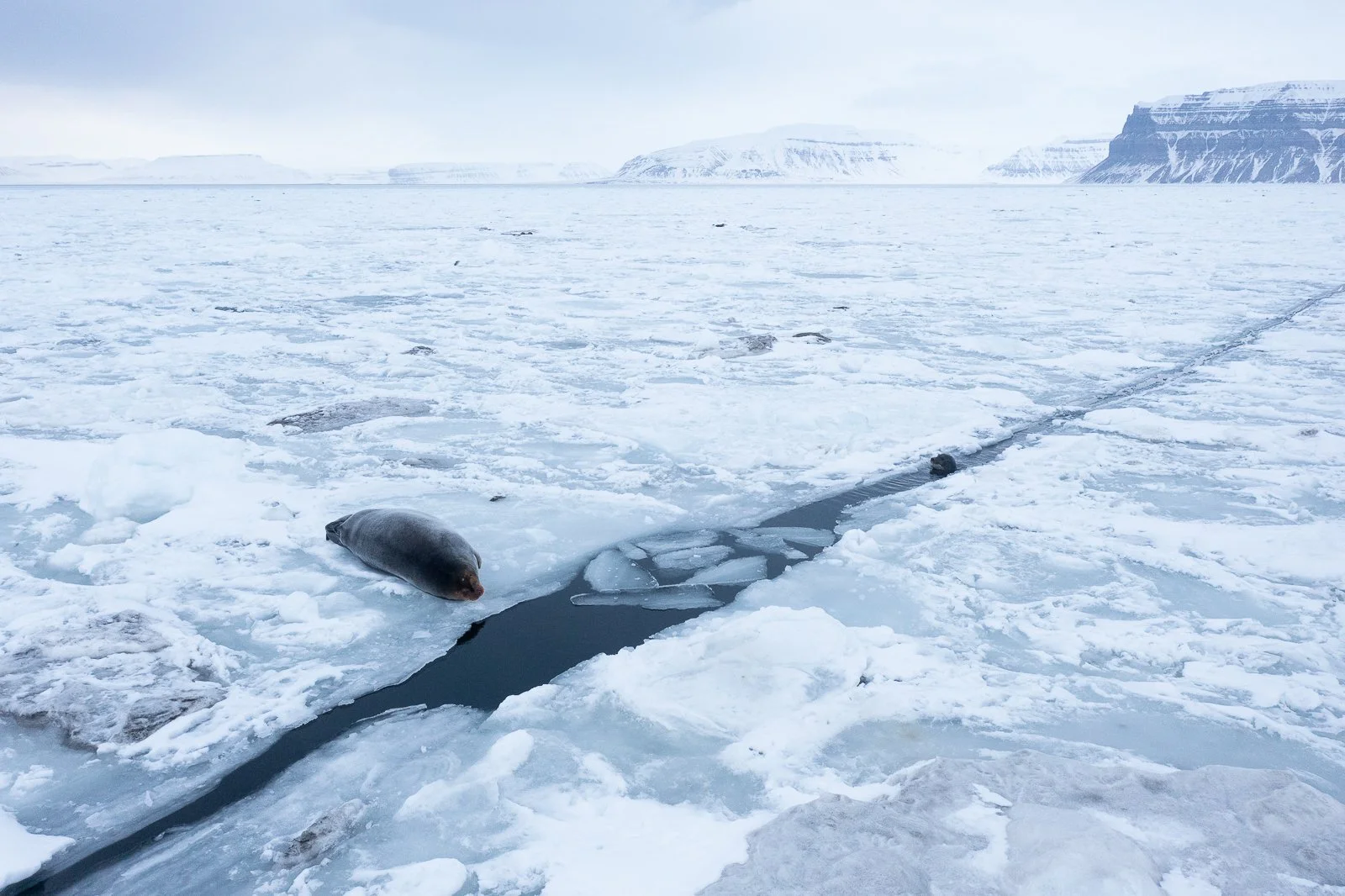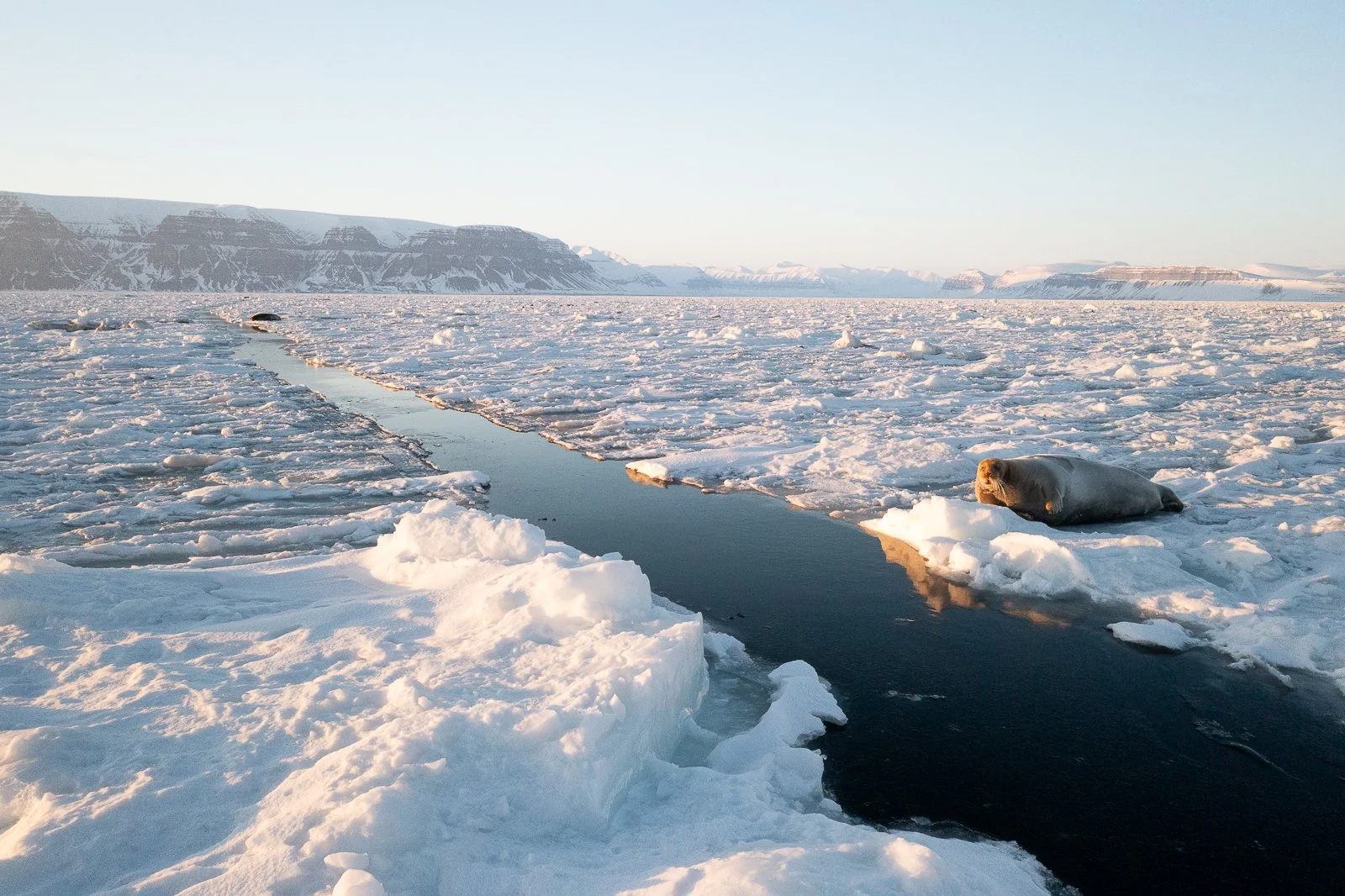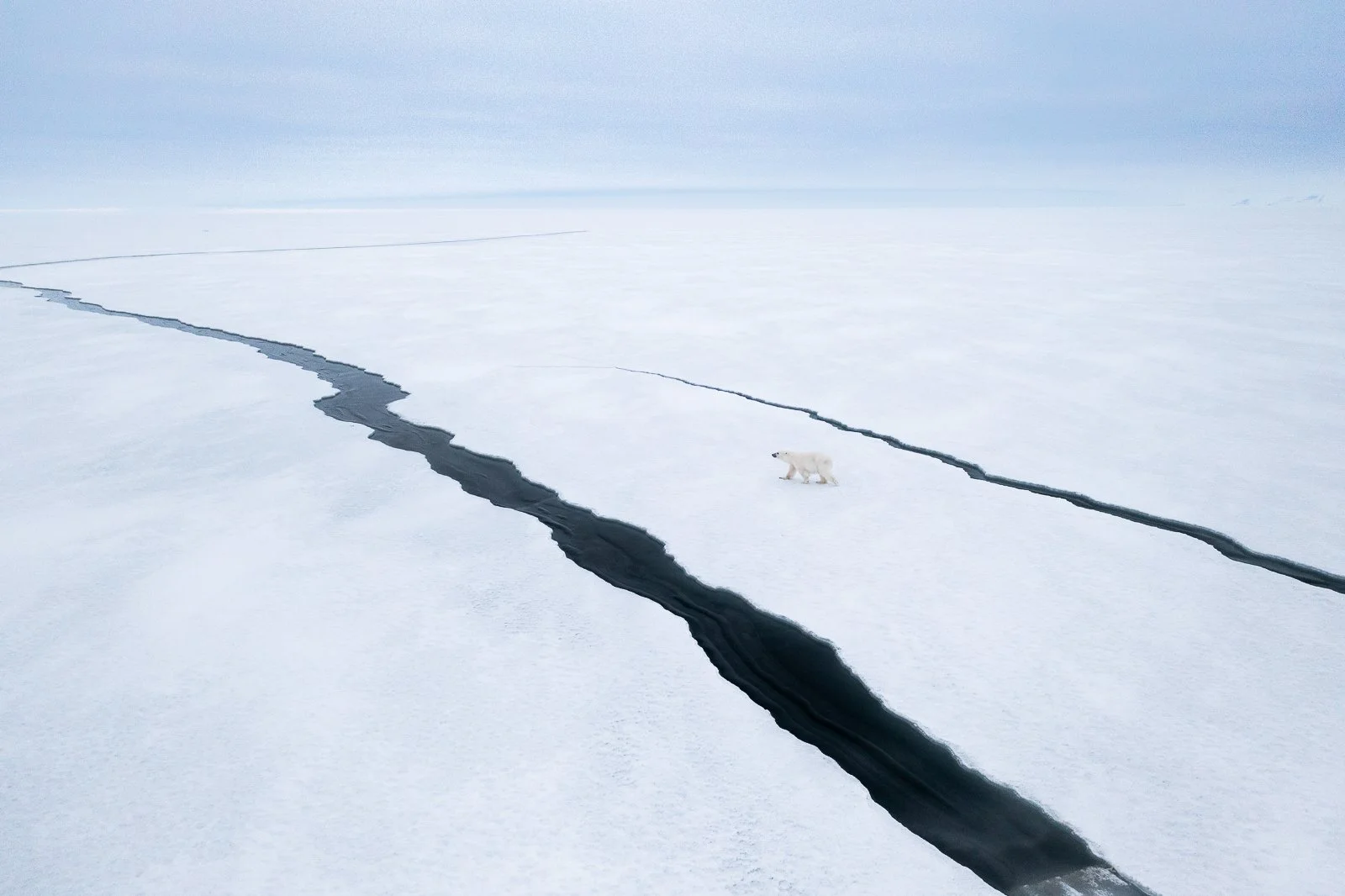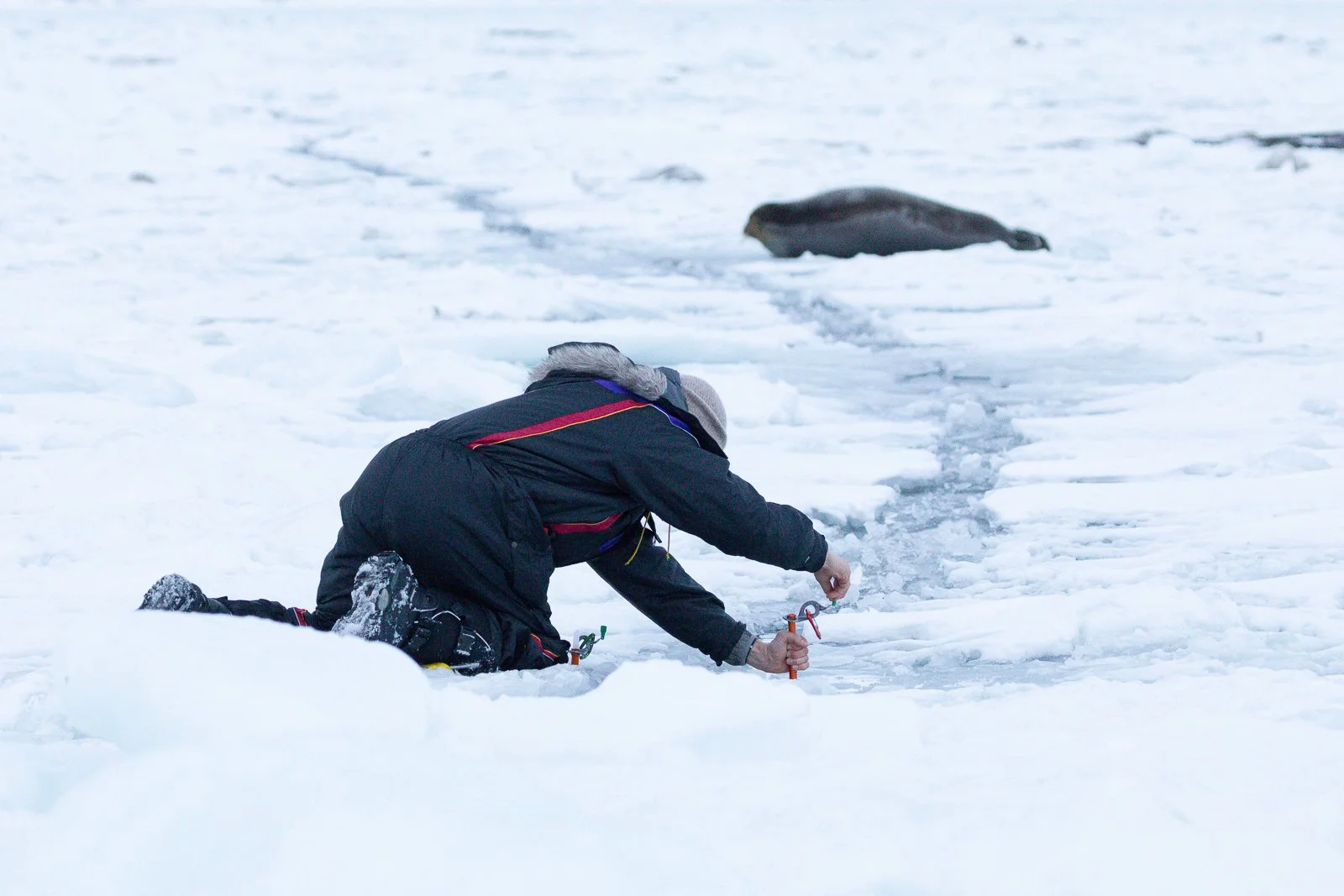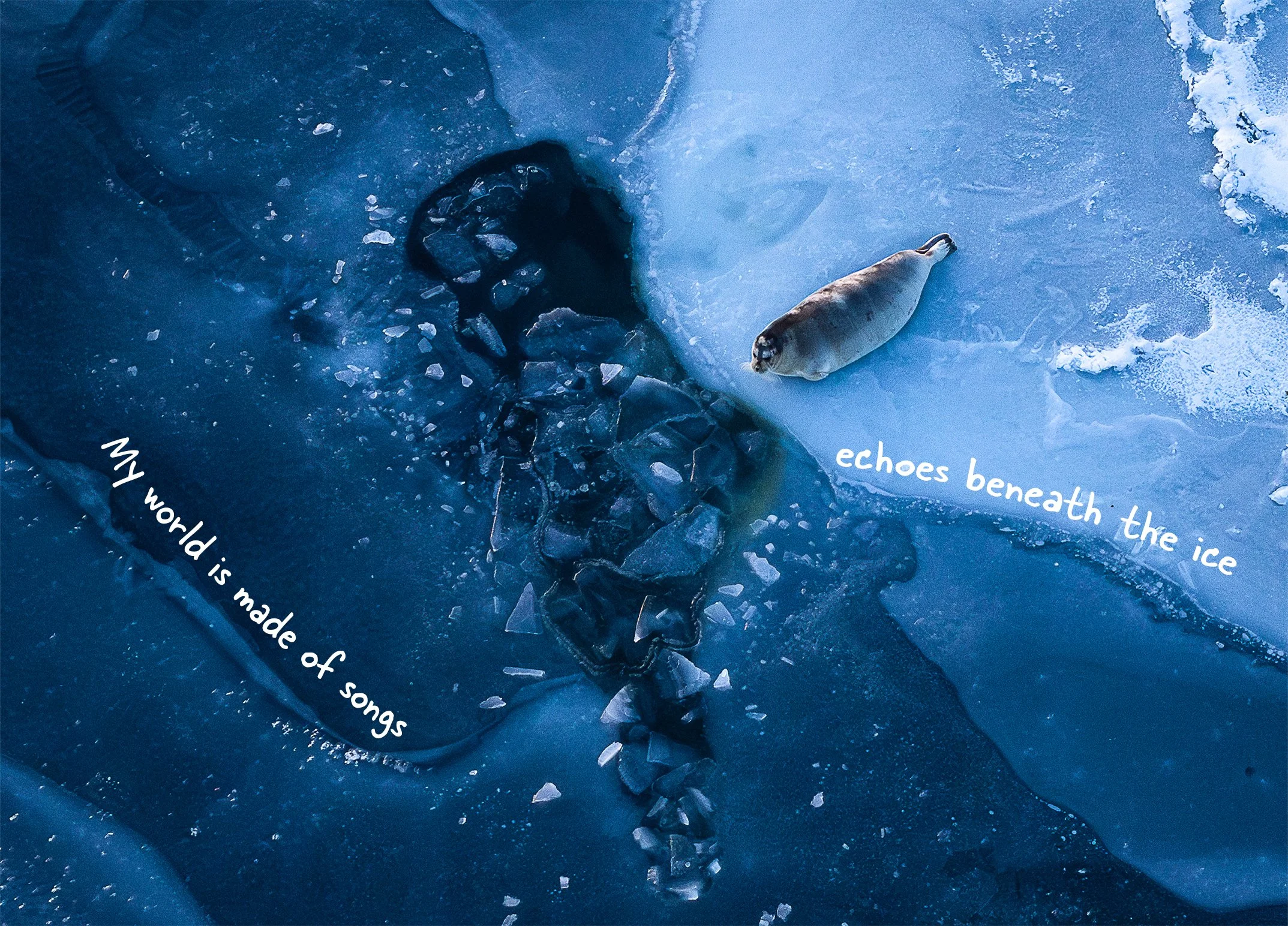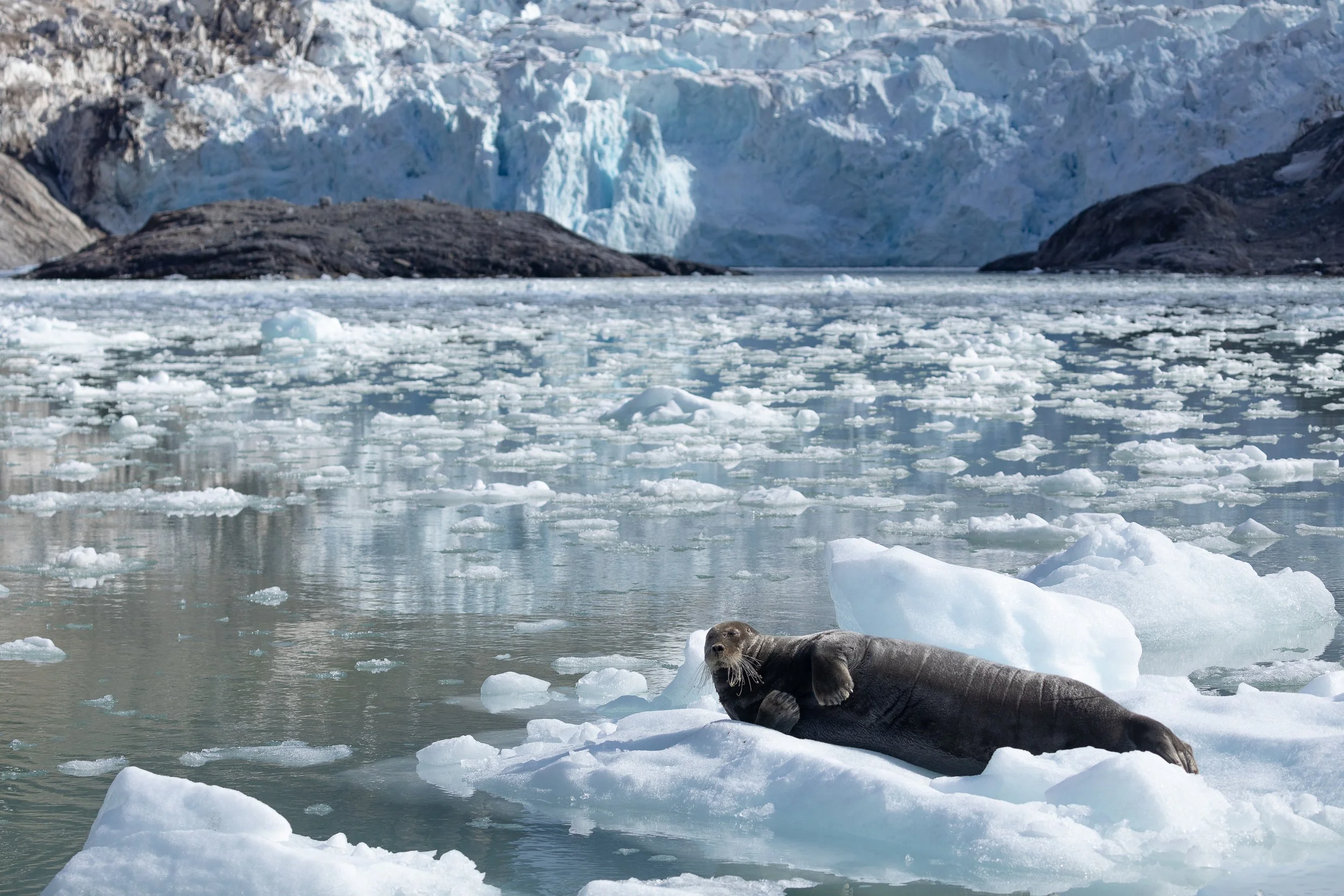
Bearded Seal
The largest seal in the Arctic. The surface shows only a portion of their life secrets, driven by underwater sound…
The bearded seal is resident and endemic to the Arctic and, meaning you won’t find it anywhere else than in such high latitudes. It needs drift-ice (broken and drifting) over shallow areas to feed on the bottom of the sea, where it finds sea worms and crustaceans. The long whiskers that give them name, help them sense the buried prey. While they rummage, the bottom sediments release iron that oxidizes in their face in contact with oxygen, giving them that rusty appearance.
As climate change continues, the preferred platform for the bearded seals, the sea-ice, disappears. Summer marks the minimum sea-ice extent annually, and freshwater glacier fronts calve tons of ice in the form of icebergs. Bearded seals and other species use it for their life activities when sea-ice is gone. However, it is not so easy for an animal of 400 kg to find a suitable piece. The seals in the images were lucky enough to find iceberg pieces big and flat, using it to complete the molt with lower energy cost. That’s why they looked so neat and shiny! This is a very important part of their annual cycle, and it happens after mating, which is the real deal for these animals.
Sometime in April the sun is finally shining without a break in Svalbard, sparking the hormones and other circadian messengers of the life in the Arctic. This has a dramatic effect on the animals’ behavior, including bearded seals. They start taking positions inside the fjords that will provide them an strategic advantage when the time comes, even though it’s early in the season and fast-ice (stable and fixed to land) cover the area.
They will use small holes and track the formation of long cracks across the fjord so they can haul out in favorable areas. As the crack grows, more and more seals are attracted.
Such areas with cracks along fast-ice attract polar bears that roam in search of prey. A bearded seal frequently using fast-ice takes higher risk of being killed than those breeding in the drift ice offshore. Newborn pups hauling out on fast-ice have greater mortality.
It’s May now, and the females will start to give birth to the calf from the previous season (11 months of gestation with delayed implantation). It is male’s show time, and they will chase away other males and advertise their breeding condition to the females weeks and even months before they are able to breed. They send clear messages: I am fit and ready to breed. The females won’t be able to breed until they give birth and enter ovulation towards the end of the lactation period, which typically lasts 24 days and during which females introduce pups to the underwater world while continuing to feed at the sea floor. But the mistery to this stroy still lingers in between the lines… How do males attract females?
To show it, we installed an underwater camera and sound recorder throught the ice crack, using the ice edge as an attach point to anchor the instruments. To be honest, much of what was going on underwater could be heard while walking on the waving ice. Push play!
